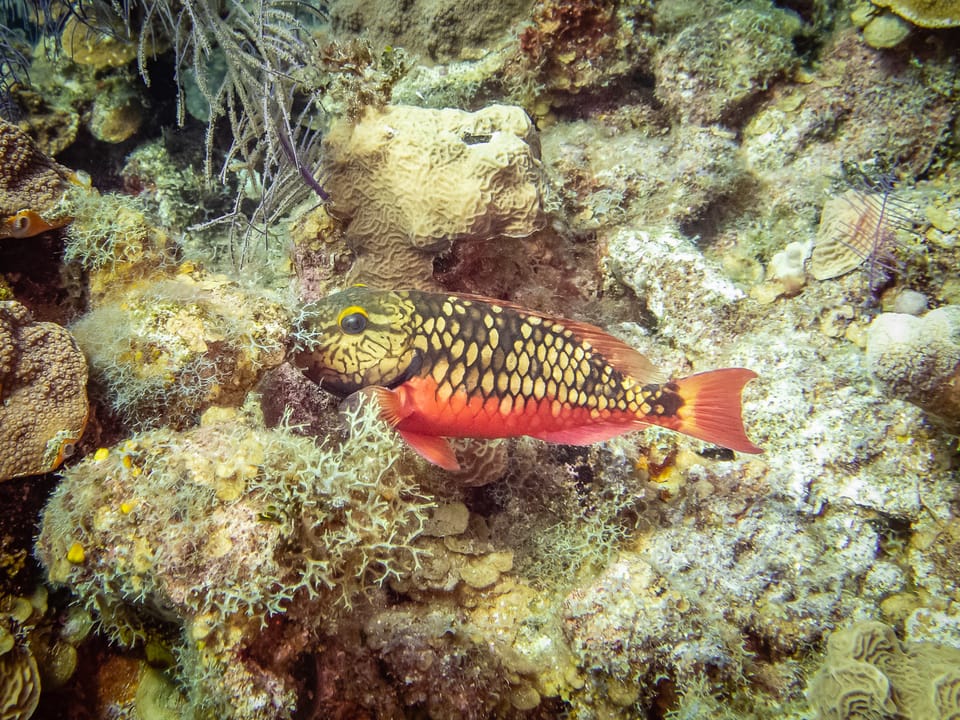Book Review: A Little Queer Natural History by Josh L. Davis

“The planet on which we live is filled with an extraordinary range of animals, plants and fungi. Collectively, they exhibit an astonishing diversity when it comes to what they look like, where they live and how they behave. And nowhere is this truer than when it comes to their sex and sexual behaviours.”
From microscopic mites to colossal blue whales, the natural world displays an infinite variety of shapes, forms, and behaviours. A Little Queer Natural History by Josh L. Davis illustrates the tremendous variety of reproductive options and sexual behaviours of creatures as varied as yew trees, parrotfish, giraffes, green sea turtles, and bighorn sheep.
Asexual Reproduction
“Sexual reproduction permits species to mix their genes up and produce variation that can be helpful in the case of environmental changes, but it comes at a significant cost as they must expose themselves in order to find a mate and there is a risk of sexually transmitted diseases. It may also break up groups of genes that work well together. Plus, it means only half the population can produce offspring.”
Mangrove Killifish is a tiny fish found in brackish and marine waters along the Caribbean coast. Unlike any other vertebrate, killifish can “produce both sperm and eggs and fertilize them within their own body”. You might expect the lack of genetic variation to have lessened the fish’s ability to adapt to changing circumstances, but that isn’t the case. They are able to alter their behaviour and personality as required.
Davis explains that, “Mangroves and swamps are highly dynamic environments where water levels fluctuate rapidly from hour to hour and season to season. This means that the little fish can literally find themselves left high and dry, with some reports of fish stranded up trees. As a result of being frequently trapped in ephemeral pools of water, the fish have evolved a whole suite of adaptations that include an ability to breathe air and impressive tolerance of heat and salinity … It is also likely the driving force behind its selfing ability. If an individual fish finds itself trapped in a crab hole on its own, it can then just get on with populating that hole all by itself.”
New Mexico Whiptail Lizards, found in the southwestern United States, lay fertile eggs without encountering any sperm. The all-female lizards still engage in sex with each other, which is thought to stimulate the production of more eggs.
Tripod fish live deep in the depths of the Atlantic, Pacific, and Indian Oceans and have both male and female sexual organs. “Because of their extremely remote environment, the fish have to be certain that when they meet an individual of the same species they can have sex and reproduce, so both individuals release their sperm and eggs into the water where they mix and fertilize.”
Changing Sex
“[Clownfish] live in rigorously hierarchical groups in which a larger, dominant female and male pair reproduce, with a number of smaller males in the group. If the female dies, then the largest male simply changes sex to take her place and mates with the next largest male, with everyone shifting up in the pecking order.”
A yew tree in Edinburgh’s Royal Botanic Gardens that was thousands of years old suddenly developed a branch that produced fruit, “the otherwise pollen-bearing tree had developed a single, seed-bearing branch”.
The majority of parrotfish switch from female to male when they reach a certain size, while only a few change from male to female. They are sequential hermaphrodites producing male and female sex cells, but at different points in their life. “Parrotfish may do this because of their mating system in which a single large male has a harem of smaller females. It has been argued that under these circumstances there is little advantage for a fish to start life as a smaller male as it would be unlikely to defeat the larger male to mate. So the fish can increase their reproductive success by first developing as females before switching sex later in life when larger in size.”
Homosexual Behaviour
“I hope that this book and the examples it highlights flip the question of ‘why does homosexuality exist in nature when it appears to go against evolution?’ on its head. Instead, the majority of animals – and many of the plants – are out there right now, most likely engaging in plenty of queer activities without us even knowing.”
In any given year, up to 20% of black swan couples are both male. One of the males mates with a female and then lays claim to the eggs or the male pair chases heterosexual swans off their nest and raises the clutch of eggs as their own. Male pairs are often more successful than their heterosexual counterparts, perhaps because they’re able to maintain a larger territory or because the females must expend greater energy on incubation efforts. In addition, “homosexual swans are frequently more equitable when it comes to parental duties.”
Photo credit: https://www.flickr.com/photos/apmckinlay/46424268655
EcoFriendly West informs and encourages initiatives that support Western Canada’s natural environment through its online publication and the Nature Companion website/app. Like us on Facebook, follow us on BlueSky, X, and Mastodon, or subscribe by email.

Member discussion